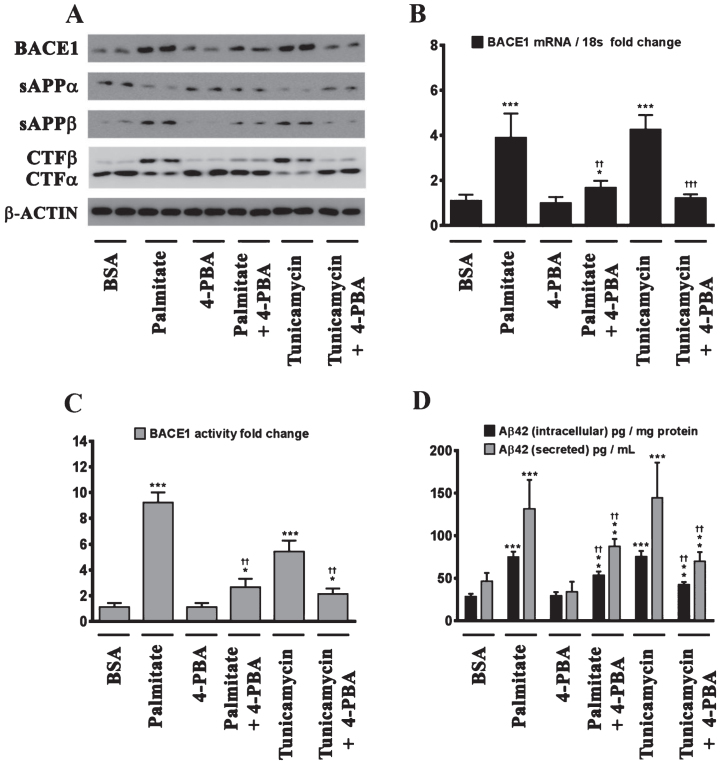Fig.4.
Palmitate induces BACE1 expression and subsequent Aβ genesis by inducing ER stress. A) Representative western blots show that pretreatment (for 2 h) of the human neuroblastoma cells with the molecular chaperone 4-PBA significantly precludes the palmitate-induced increase in BACE1 protein levels accompanied by a decrease in the amyloidogenic processing of AβPP as evidenced by a decrease in the palmitate-induced increase in sAβPPβ and CTFβ levels concomitant with an increase in the palmitate-induced decrease in sAβPPα and CTFα levels in the whole cell homogenates from SH-SY5Y-APPSwe cells. B, C) Pretreatment with 4-PBA attenuates the palmitate-induced increase in BACE1 mRNA expression (B) and BACE1 activity (C) in SH-SY5Y-APPSwe cells. D) ELISA immunoassays show that pretreatment with 4-PBA significantly attenuates the exogenous palmitate treatment-induced increase in the levels of the intracellular Aβ1 - 42 species in the whole cell lysates and secreted Aβ1 - 42 species in the conditioned media, from SH-SY5Y-APPSwe cells. Pretreatment (for 2 h) with the molecular chaperone 4-PBA also significantly precludes the Tunicamycin-induced increase in the following - BACE1 protein levels (A), BACE1 mRNA expression (B) and BACE1 activity (C), and intracellular as well as secreted Aβ1 - 42 species (D), in SH-SY5Y-APPSwe cells. Data is expressed as Mean±S.D and includes determination made in four (n = 4) separate cell culture experiments. *p < 0.05, **p < 0.01, ***p < 0.001 versus BSA-treated cells; ††p < 0.01, †††p < 0.001, versus palmitate-treated cells or Tunicamycin-treated cells.

